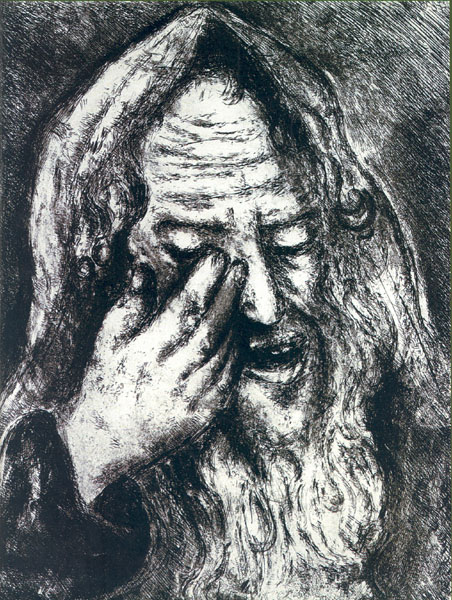Image Details

Gift of Mr. & Mrs. Curtis Hereld in memory of Dr.and Mrs. W. Reichman/The Jewish Museum, NY/Art Resource, NY/©2000 Artists Rights Society (ARS), New York/ADAGP, Paris
“My heart moans within me, I cannot be silent; for I hear the blare of horns, alarms of war,” Jeremiah laments during the last days of Judah (Jeremiah 4:19). The prophet’s sorrow is palpable in this etching of “The Sufferings of Jeremiah,” from Marc Chagall’s illustrated Bible, published in Paris in 1956.
The prophet’s words are known to us from two very early versions of the Books of Jeremiah: one preserved in the Masoretic Text, the traditional Hebrew version of the Bible; the other found in the Septuagint, the second-century B.C.E. Greek translation of the Hebrew Bible. In both editions, Jeremiah’s message is the same, but variations in the precise wording and arrangement of the book lead author Emanuel Tov to identify these as two separate editions of the work, prepared by two different authors or editors at different times. Once we establish which version came first, the two editions offer an unparalleled opportunity to see how the biblical authors worked as they rearranged passages, clarified the text and inserted new verses.
